With today’s economic uncertainty and sky-high inflation rates, you, as an employer, are in a tough spot.
You’ve got to protect your operation and bottom line — you can accomplish this by cutting expenses and keeping your best people.
Unfortunately, from a financial standpoint, you may not be able to keep everyone.
Our solution: Focus on empowering and retaining your high-value employees.
How do you do that?
Analyze factors like growth opportunities, creative benefits, and workplace vibe to see what needs improvement.
Today, we'll guide you through 5 strategies to boost employee retention by revamping your company culture. Because if you keep talented employees happy, they’re 87% more likely to stick around.
- What Affects Employee Retention?
- 5 Strategies to Boost Employee Retention by Revamping Company Culture
- FAQ on Employee Retention
- MakeShift Scheduling Can Help Boost Employee Retention
- Company Culture Matters
What Affects Employee Retention?
Employee retention is all about keeping your best people on board.
And there’s a heap of factors affecting whether or not someone decides to stay with your company. Factors like compensation and benefits, opportunities for growth and development, work-life balance, and a positive company culture.
Want your employees to stay put? Make changes that focus on THEM.
ROI of happy employees — The stats don’t lie. The ROI of happy employees according to a study from Good.co:
- Happy employees are 87% more likely to continue working for a company.
- 85% of fulfilled employees are more efficient with their time.
- Happy employees stay twice as long at their jobs and are 186% more likely to promote their company.
5 Strategies to Boost Employee Retention by Revamping Company Culture
“You can have all the right strategies in the world; if you don't have the right culture, you're dead.” — Patrick Whitesell
Company culture matters.
If you want to improve your retention rates, focus on your company culture.
Upgrading your workplace vibe by prioritizing your employees’ well-being can put the brakes on the revolving door of employees.
94% of entrepreneurs and 88% of job seekers say a healthy work culture is vital for success.
Read that again.
A healthy work culture is VITAL for success.
Implement these strategies to give your company culture a makeover and boost your employee retention.
1. Prioritize work-life balance
Create a positive workplace culture that prioritizes work-life balance — Fostering a positive workplace culture helps promote work-life balance. Encourage healthy habits and activities like exercise, meditation, wellness programs, and taking time off to recharge.
Encourage flexible work schedules and shift swaps.
Give your team flexibility in their work schedules to better balance work and personal lives. Allow for shift swaps or work-from-home options so they can attend to personal matters without sacrificing work obligations.
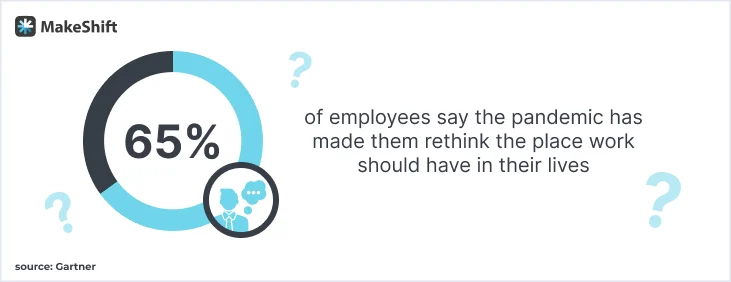
65% of employees say the pandemic made them rethink the place work should have in their lives. Boost your employee retention by letting your staff know their well-being matters.
Set an example by maintaining a healthy work-life balance.
As a manager, lead by example with your own work-life balance. Make sure you're taking time off and managing your workload effectively. This sets the tone for the rest of your team and helps them feel more comfortable taking time off themselves.
2. Adopt people-centric scheduling
Instead of a strict separation between work and personal life, flexible scheduling promotes integration of the two.
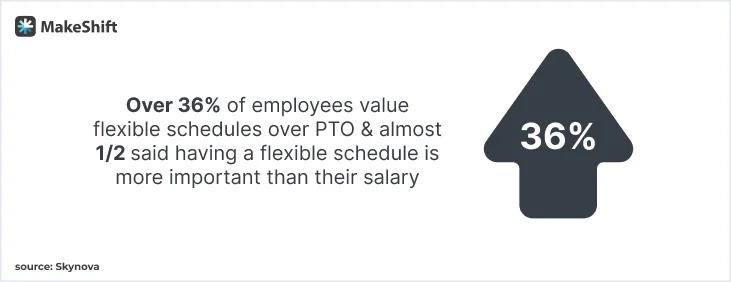
In a Skynova study, over 36% of surveyed employees valued their flexible schedule over PTO, and almost half said having a flexible schedule trumps their salary.
Below are 3 ideas for upgrading your staff scheduling to make it more intuitive and encourage flexibility.
1. Implement self-scheduling — Self-scheduling is a flexible arrangement that empowers your team to autonomously set their own work hours or shifts based on their preferences and availability. It grants employees freedom to manage their schedules, promoting a better work-life balance and increased job satisfaction.
2. Adopt scheduling software — Adopting staff scheduling software simplifies organizing work shifts and managing employee schedules. With just a few clicks, you (& your employees) can efficiently create, update, and communicate work schedules, making it easier for the whole team.
When choosing staff scheduling software, look for these features:
- Automated Shift Scheduling — Invest in scheduling software that automates shift assignments. Consider software that takes into account employee availability and skills.
- Real-Time Schedule Updates — Use scheduling software that provides real-time updates and notifications. Employees should be able to access their schedules easily and receive alerts for any changes.
- Mobile Accessibility — Ensure the scheduling software is mobile-friendly and that employees can view and manage their schedules on their smartphones.
3. Hybrid work & flexible work hours
We’ve already mentioned this, but it’s worth repeating. Today’s employees want more flexibility.
They won’t sell their soul for your company — they’re looking for more balance. If you give them options to create more balance in their lives, your employee retention rates will improve dramatically.
When thinking about staff schedules, focus on results and deliverables rather than strict working hours.
Try a few of these options to offer schedule flexibility:
- Remote Work Options — Implement a hybrid work model with a mix of in-office and remote work. And let employees choose the number of days they work from home.
- Hot Desking — Introduce hot desking in the office, allowing employees to choose where they work.
- Flexible Work Hours — Let employees to set their preferred work hours in the workplace and remotely with flexible start and end times.
- Compressed Workweeks — Offer the option for employees to work longer hours on fewer days, allowing for extended weekends.
3. Offer training & development
Empower your employees to develop and upgrade skills through training and professional development opportunities. This can boost their engagement at work AND your retention rates.
Want to know what training and development programs can do for you?
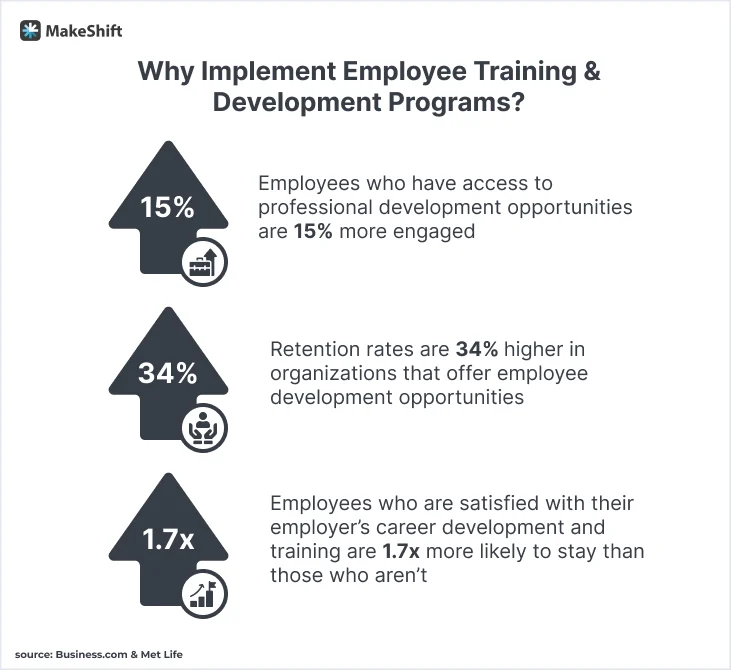
- Employees who have access to professional development opportunities are 15% more engaged.
- Retention rates are 34% higher among organizations that offer employee development opportunities.
- Employees who are satisfied with their employer’s career development and training are 1.7x more likely to stay than those who aren’t.
We’ve brainstormed ideas for training & development:
- Onboarding Programs — Provide comprehensive orientation for new employees to familiarize them with company culture, policies, and procedures. Introduce them to key team members and provide an overview of their roles and responsibilities.
- Technical Skills Training — Offer continuous training on technical skills relevant to specific roles within your organization. Workshops, webinars, or online courses can keep employees updated on industry-specific tools and tech.
- Soft Skills Development — Communication skills workshops help enhance written and verbal communication. Emotional intelligence training can improve interpersonal relationships and teamwork.
- Leadership Development Programs — Identify and groom potential leaders within the organization. Focus leadership training on decision-making, conflict resolution, and strategic thinking.
- Mentorship Programs — Pair less experienced employees with seasoned mentors to facilitate knowledge transfer, guidance, and career advice through mentorship relationships.
- Sales and Customer Service Training — Develop training programs on effective sales techniques and customer relationship management. Offer customer service workshops to enhance communication and problem-solving skills.
- Project Management Training — Train on project management methodologies and tools. Offer training for leadership in project management, including risk assessment and resource allocation.
- Cross-Functional Training — Provide employees with opportunities to learn about different departments and functions. This enhances collaboration and creates a more versatile and adaptable workforce.
4. Go beyond basic benefits
You already know that to keep your top talent, competitive salaries, and comprehensive benefits packages are a must.
However, that’s the tip of the iceberg — think beyond typical benefits.
Offering creative employee benefits sets your company apart and contributes to a positive and inclusive workplace culture. Tailoring benefits to meet diverse needs and preferences fosters a sense of appreciation and loyalty within the workforce.
According to Glassdoor’s Employment Confidence Survey, about 60% of people report that benefits and perks are a major factor in considering whether to accept a job offer. The survey also found that 80% of employees would choose extra benefits over a pay raise.

Breeze through these ideas for more creative benefits that’ll help your company retain its employees:
- Wellness Subscriptions — Provide employees with subscriptions to wellness apps, fitness classes, or meditation services. Offer reimbursement for gym memberships, fitness trackers, or healthy meal delivery services.
- Professional Development Budget — Allocate a budget for each employee on courses, conferences, or certifications outside of your training and development.
- Pet-Friendly Policies — Allow employees to bring well-behaved pets to the office. Go further and offer pet insurance as part of your employee benefits package.
- Adventure Days or Experiences — Offer "Adventure Days" where employees can take a day off to explore outdoor activities, cultural events, or other experiences. Reward exceptional employees with gift cards for unique experiences like hot air balloon rides, cooking classes, or spa days.
- Student Loan Repayment Assistance — Help employees pay off student loans by contributing to their monthly payments. Offer a structured program where your company matches a percentage of the employee's loan payments.
- Home Office Stipend — Provide a stipend to employees to enhance their home office setup. Allow employees to use the stipend for ergonomic furniture, high-quality headphones, or other items to improve their work environment.
- Volunteer Time Off (VTO) — Grant employees dedicated time off to volunteer for causes they are passionate about. Organize company-wide volunteer events to encourage team participation in community service.
- Family-Friendly Benefits — Provide on-site childcare facilities or partner with local daycare centers. Offer extended parental leave, flexible return-to-work options, and support for new parents.
- Financial Planning Services — Offer financial planning workshops or provide access to financial advisors. Provide resources to help employees plan for their financial future, including retirement and investment advice.
- Personal Concierge Services — Work strange hours? Provide a personal concierge service to assist employees with grocery shopping, dry cleaning, or meal planning tasks. Offer a subscription to virtual personal assistant apps.
- Health and Wellness Challenges — Organize friendly competitions or challenges related to health and wellness. Provide incentives or rewards for achieving wellness goals, like fitness milestones or healthy eating habits.
- Employee Recognition Program — Implement a creative recognition program that includes personalized shout-outs, custom awards, or a "Wall of Fame." Celebrate work anniversaries with unique and memorable gifts.
- Peer Recognition Program — Implement a peer-to-peer recognition program where employees can nominate their colleagues for outstanding contributions. Provide rewards or incentives for employees who receive multiple peer recognitions.
- Customizable Benefits Packages — Allow employees to choose from a menu of benefits to create a personalized package that suits their needs. Offer flexibility in health insurance plans, retirement options, and other perks.
5. Promote collaboration & communication
Cultivate a workplace culture that encourages open communication and working as a team. Employees invest more in their roles when they feel their voice is valued.
The stats speak for themselves concerning workplace communication.
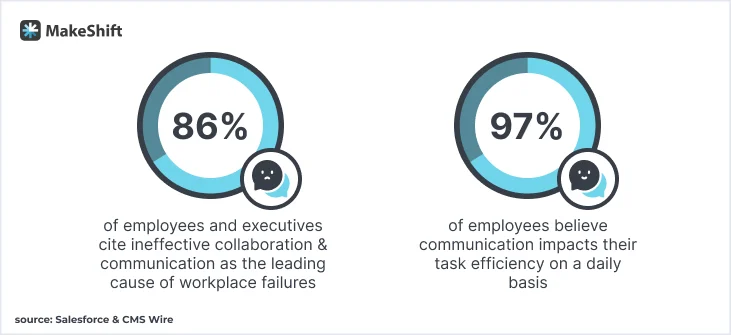
86% of employees and executives cite ineffective collaboration and communication as the leading cause of workplace failures.
97% of employees believe communication impacts their task efficiency on the daily.
Put a few of these ideas into action to promote a culture of communication and collaboration:
- Open Communication Channels — Establish open and accessible channels for communication, such as team chat platforms, email, and regular meetings. Encourage employees to share ideas, feedback, and concerns without fear of reprisal.
- Regular Team Meetings — Schedule regular team meetings to discuss ongoing projects, share updates, and address challenges. Ensure these meetings are inclusive and provide an opportunity for everyone to contribute.
- Use Collaboration Tools — Implement collab tools like project management platforms, shared documents, and virtual whiteboards. Foster a digital workspace that facilitates easy collaboration and information sharing.
- Clear Communication Protocols — Establish clear communication protocols, including guidelines for email etiquette, meeting agendas, and document sharing. Clarify expectations for response times and availability.
- Team Building Activities — Organize team-building activities to strengthen relationships and improve collaboration. Activities can be both virtual and in-person, fostering a sense of unity among team members.
- Collaboration — Encourage collaboration between different departments and knowledge sharing. Facilitate cross-functional projects to promote a holistic approach to problem-solving.
- Accessibility to Leadership — Ensure leadership is accessible and approachable. Foster an environment where employees feel comfortable reaching out to leadership for guidance or feedback.
- Collaborative Decision-Making — Involve team members in decision-making processes whenever possible. Encourage diverse perspectives and input before making significant decisions.
- Encourage Face-to-Face Interaction — Encourage face-to-face interactions through in-person meetings or video calls. Personal connections nurture collaboration and build stronger working relationships.
- Celebration of Achievements — Celebrate team achievements, milestones, and successful projects. Acknowledge and appreciate the collaborative efforts of individuals and the team.
- Communication Training — Provide training on practical communication skills. Focus on active listening, clear articulation of ideas, and constructive feedback.
- Encourage Informal Communication — Foster informal communication channels for casual interactions among team members. This can include virtual coffee breaks, chat channels, or shared social spaces.
FAQ on Employee Retention
What are the 3 R's of employee retention?
The 3 R's of employee retention are Recruitment, Recognition, and Rewards.
Focusing on these aspects helps attract, acknowledge, and incentivize employees to stay with the company.
Why is employee retention an issue?
Employee retention is a concern because high turnover can disrupt productivity, increase recruitment costs, and impact team morale. It's crucial to retain valuable talent for organizational stability and success.
How will you improve employee retention?
To enhance employee retention, consider implementing strategies such as fostering a positive work culture, offering professional development opportunities, providing competitive compensation, and ensuring effective communication and feedback.
What factors impact employee retention?
Factors influencing employee retention include a positive work environment, opportunities for growth, fair compensation, work-life balance, recognition for contributions, and effective leadership. Prioritizing these factors can contribute to higher retention rates.
MakeShift Scheduling Can Help Boost Employee Retention
MakeShift contributes to employee retention by addressing key factors impacting job satisfaction, work-life balance, and employee engagement.
- Flexible Scheduling Options — MakeShift allows employees to input their availability and preferences, providing a platform for flexible scheduling. The ability to customize schedules based on individual needs contributes to improved work-life balance, often a deciding factor in employee retention.

- Self-Scheduling Features — Empowers employees with the ability to self-schedule within set parameters. Self-scheduling fosters a sense of autonomy and control, leading to higher job satisfaction and a lower likelihood of turnover.
- Real-Time Visibility — Provides real-time visibility into work schedules, allowing employees to stay informed about their upcoming shifts and any changes. Enhanced visibility reduces scheduling-related stress and helps employees plan their personal lives better, positively impacting job satisfaction.
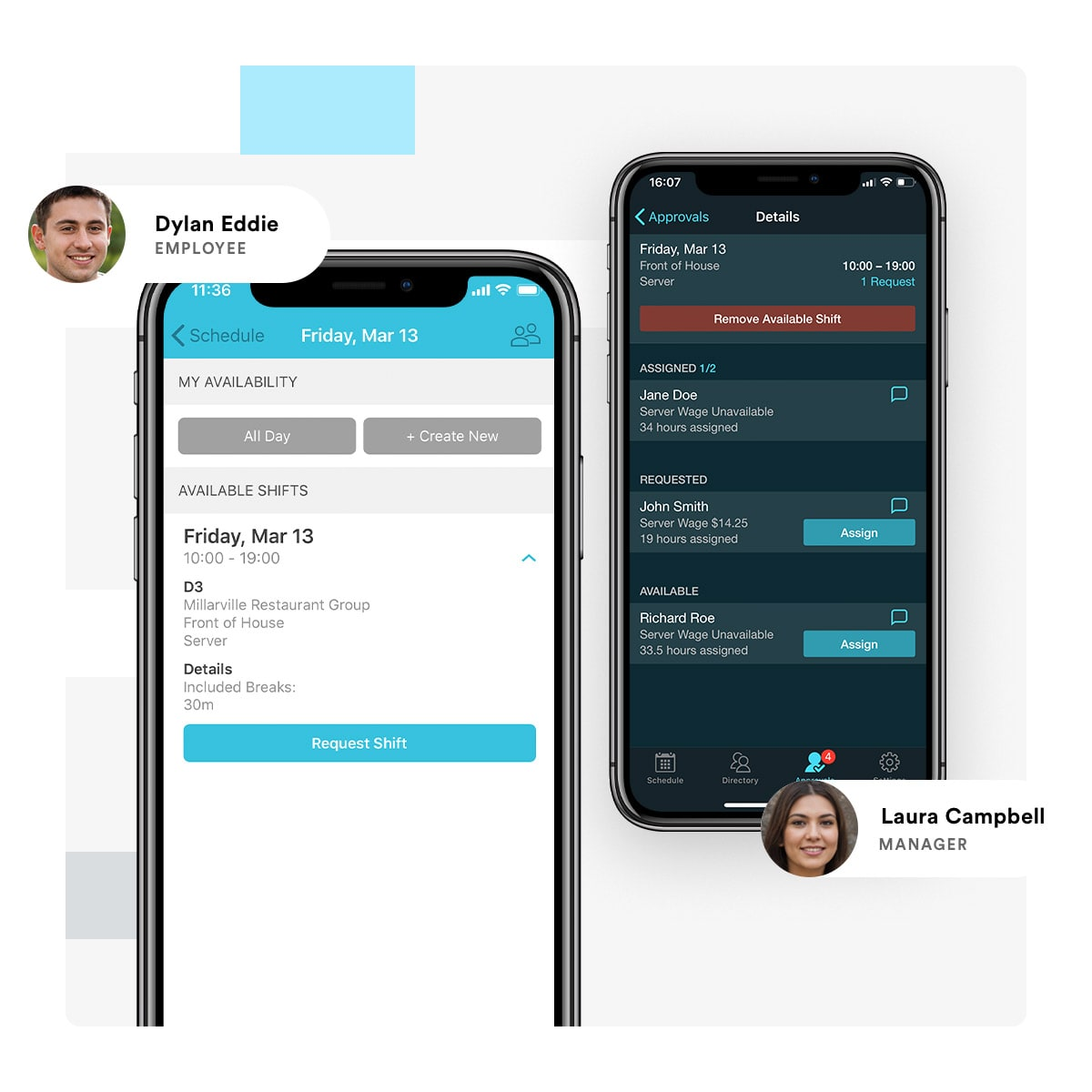
- Communication and Collaboration — Facilitates easy communication between managers and employees regarding scheduling concerns, shift changes, or requests. Effective communication through the platform strengthens relationships, builds trust, and contributes to a positive work environment.
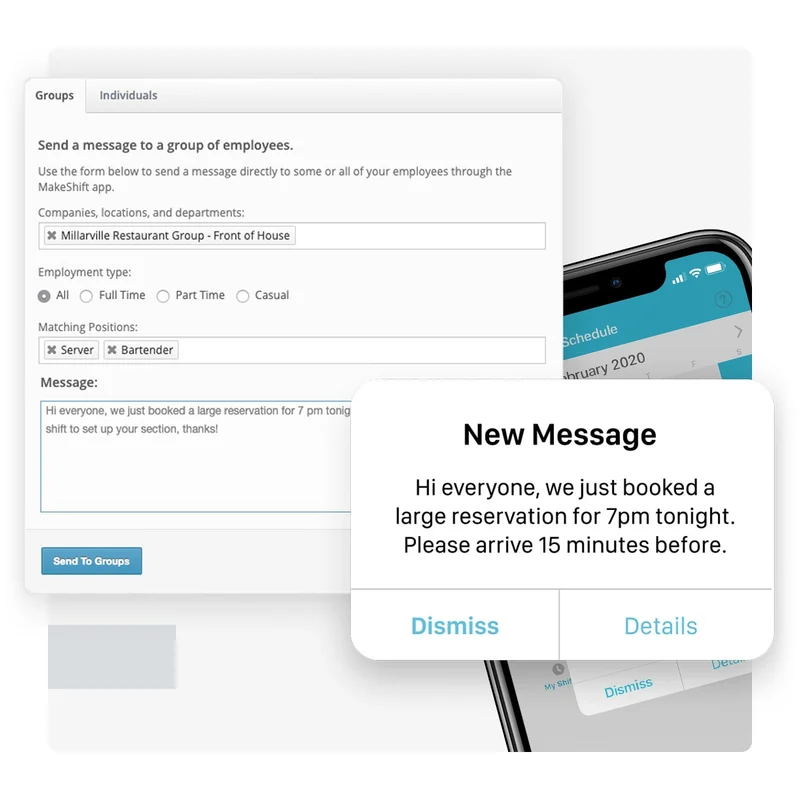
- Shift Swapping — Features that allow employees to swap or trade shifts directly through the platform. This flexibility in managing shifts accommodates individual needs and preferences, reducing scheduling conflicts and dissatisfaction.
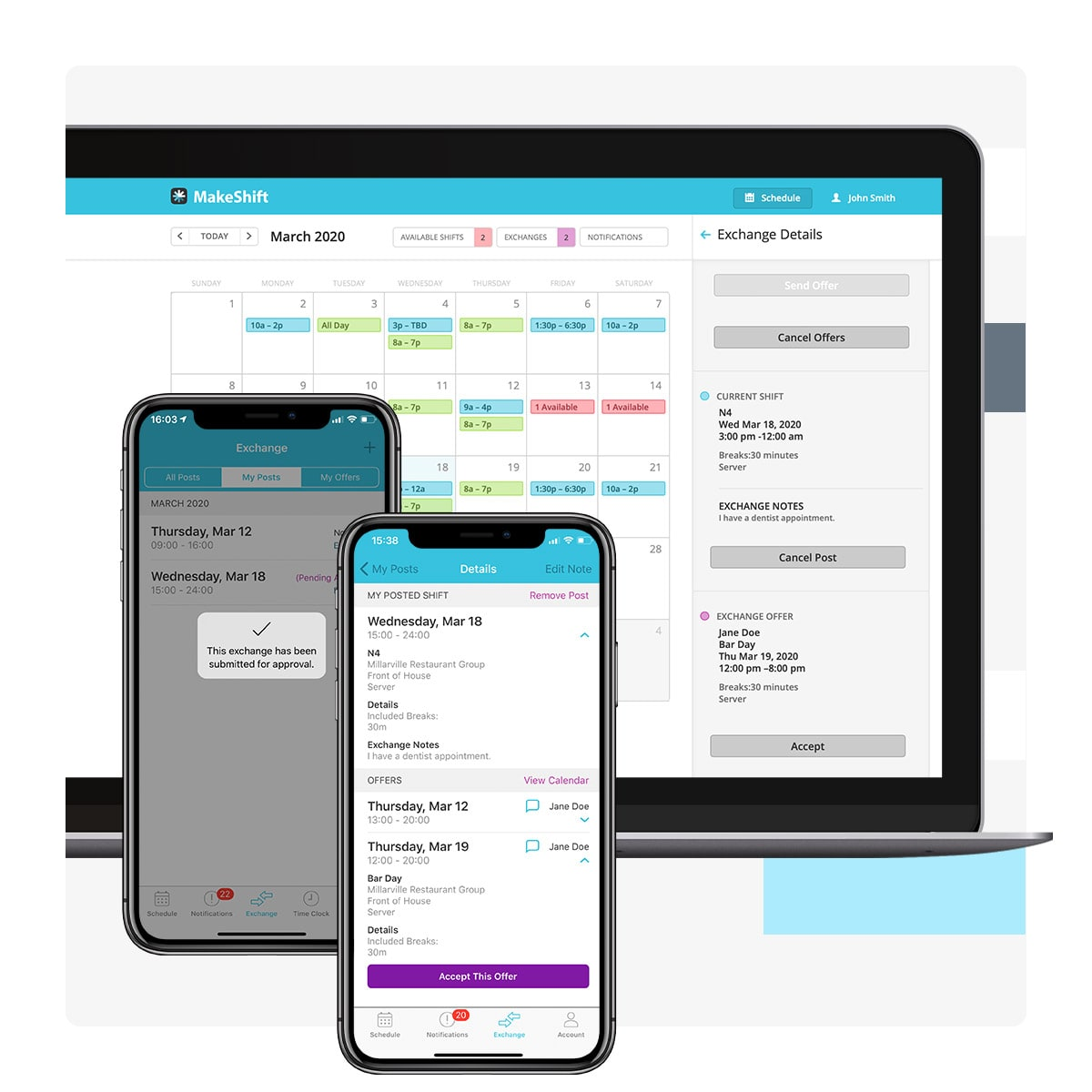
On-the-go schedule management — A schedule in their pocket. Employees can submit requests and pick up shifts from anywhere.

Company Culture Matters
Retaining top talent is crucial for your company’s success. You can improve employee retention by prioritizing factors like compensation, work-life balance, and a positive company culture.
The ROI of happy employees is substantial, with increased efficiency and longer job tenures. Implementing the strategies above can make a significant impact on retention rates. Remember, a healthy work culture is vital. Addressing the factors affecting your culture demonstrates a commitment to your team's well-being and satisfaction.
At MakeShift, improving life for your staff is what we do best. Ready to see it for yourself? Schedule a free demo today.




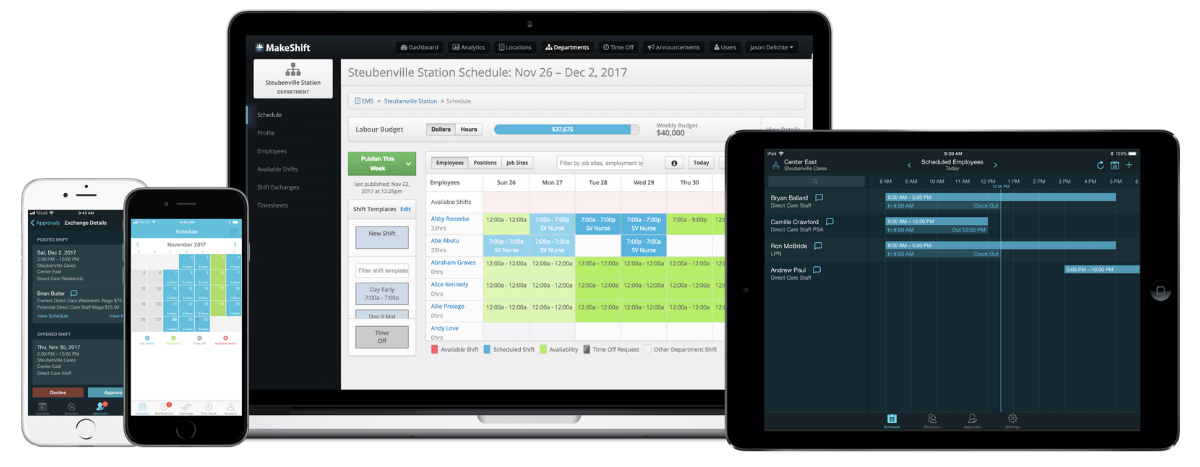


.png)
